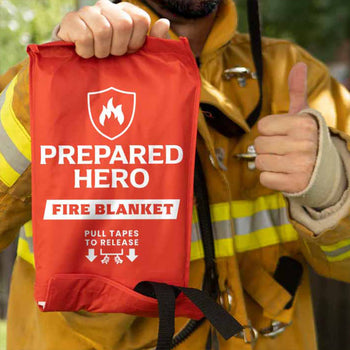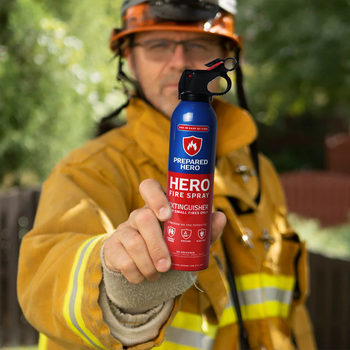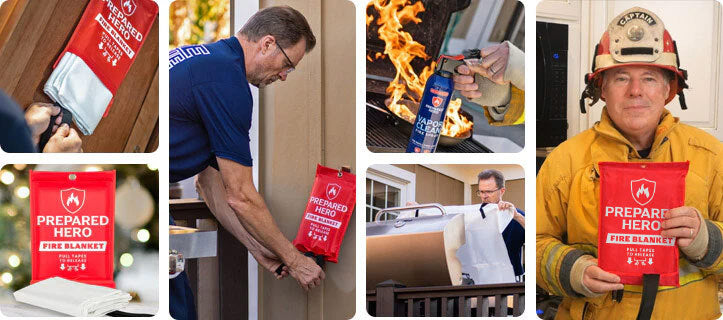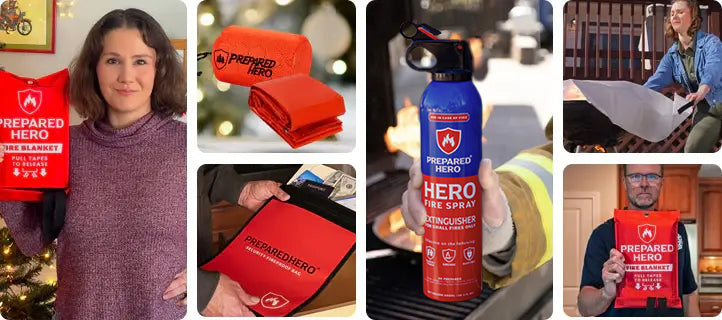Where you put your smoke detectors matters just as much as installing them. Proper placement makes sure they can detect...
The Solo Stove Bonfire has gained popularity for many reasons. Whether you’re planning to get one or already have one, this guide is for you. In this article, we’ll walk you through everything you need to know about this stainless fire pit, including cleaning, placement, and maintenance. We’ll also answer the most frequently asked questions about it.
What Is the Solo Stove Bonfire?
The Solo Stove Bonfire is a smokeless, stainless steel outdoor fire pit. It aims to give you a real wood-burning fire without the smoke. It has a special airflow system that burns wood more efficiently, which means less smoke in your face and less wasted firewood.
It’s also easy to set up, with no electricity or gas needed. Just add some dry wood, light it up, and enjoy. Its latest version also has a removable ash pan, so it’s easier to clean up. Plus, it’s portable, which makes it great for patios, backyards, beach nights, and camping.
The Solo Stove Bonfire is also durable and built to last, but light enough to carry around. It gets hot quickly and produces enough heat, making it perfect for small groups. In short, the Solo Stove Bonfire is a good pick if you want the fire pit vibe without the smoke and mess.
How to Clean Your Solo Stove Bonfire

Source: Pinterest
Unlike regular fire pits, the Solo Stove Bonfire is easy to clean. Here’s how to do it right:
1. Let It Cool Completely
Make sure everything’s completely cool. Stainless steel holds heat longer than people usually think, so be careful.
2. Remove the Ash Pan
Lift the removable base plate and grab the ash pan below. Then, carefully dump the ashes in a trash can or compost (if you used untreated wood).
3. Clean Out Loose Debris
Use a small broom or vacuum to sweep up any leftover wood bits, soot, or fine ash that the pan didn’t catch.
4. Wipe the Inside
Use a paper towel or a damp cloth to wipe the inside. Focus on any sticky or chunky build-up inside.
5. Deep Clean It (Optional)
Deep clean it if there are tougher stains or soot marks. Mix mild dish soap with warm water first. Then, use a soft sponge to clean it. Don’t use steel wool or abrasive pads, as they can ruin your bonfire. Rinse and wipe it dry to prevent rust spots. Once clean and dry, cover it and store it in a dry place to keep rain, moisture, and dirt out.
Solo Stove Bonfire Safety Tips

Source: Pinterest
While it’s designed to be low-smoke and contained, it still burns real wood and gets extremely hot. Plus, fire can spread quickly, especially if you don’t have the right tools. Here's how to enjoy your bonfire without the risk of fire spreading.
1. Pick the Right Spot
Place your Solo Stove on a flat, fire-safe surface like concrete, gravel, or pavers. Never set it directly on grass, dirt, or a wooden deck (unless you’re using the stand).
2. Clear the Area
Make sure there’s at least 10 feet of open space around the stove. Remove dry leaves, sticks, furniture, and anything that can catch fire.
3. Use Dry, Hardwood Logs
Stick to dry hardwoods like oak or hickory. Wet or softwood can cause popping sparks or unpredictable flames.
4. Don’t Use Fire Starters or Accelerants
Skip the lighter fluid or gasoline. These are dangerous and not needed. Solo Stove is built to light easily with kindling and dry wood.
5. Keep Fire Prevention Tools Nearby
Always have a fire blanket, fire spray, or fire extinguisher within reach. If you want reliable, easy-to-use, and affordable tools to put out small fires before they spread, Prepared Hero’s fire prevention tools can help. Check them out and get up to 51% off on certain items.
6. Watch the Wind
Skip the fire if it’s windy. Strong gusts can blow sparks into flammable items.
7. Never Leave It Unattended
Stay close by until the fire is completely out and the stove is cool. Always put safety first, even after the flames are gone.
Is the Solo Stove Bonfire Really Smokeless?

Source: Pinterest
The Solo Stove Bonfire is advertised as smokeless, but it’s not 100% smoke-free. However, it produces less and cleaner air than a regular fire pit. It might also produce smoke at first, especially if the wood is damp. However, you’ll see less smoke later on.
In particular, the Solo Stove Bonfire uses a secondary burn system. It pulls in cool air from the bottom, heats it up, and pushes it out over the fire. The hot air then burns off most of the smoke particles before they escape. As a result, there’s way less smoke than you'd get from a regular fire pit.
You still get that classic wood-burning feeling, but with less eye-stinging and smoky clothes. So yes, it’s virtually smokeless. Plus, you can see the difference if you use dry hardwood and let it heat up properly. In short, it's a cleaner, more efficient fire without the constant smoke cloud.
What Can You Burn in a Solo Stove Bonfire?
You can burn dry hardwood, like hickory, maple, or oak, in the Solo Stove Bonfire. They burn hot and clean, which is what the stove bonfire is made for. You can also use kiln-dried wood like juniper. While you can also use softwood like pine, they burn quickly and create more smoke. Just avoid fire logs and oiled or treated wood.
Can You Put a Solo Stove Bonfire on a Deck?

Source: Pinterest
Yes, you can use the Solo Stove Bonfire on a deck, but only if you put it on its stand. It lifts the stove bonfire off the surface, which helps prevent heat damage. That said, it can burn extremely hot, so it's smart to take extra steps. If you’re planning a long burn or just want peace of mind, place a heat-resistant mat or some pavers under the stand. Whether your deck is wood or composite, always play it safe. Make sure there’s nothing flammable nearby, and keep an eye on the fire. With the right setup and a little caution, you can enjoy your Bonfire right on your deck without worrying about damage.
What Shouldn’t You Put In a Solo Stove Bonfire?
You shouldn’t put accelerants like gasoline and lighter fluid in your Solo Stove Bonfire. They’re dangerous and can damage the stove. Stick to dry, seasoned hardwood for the best results.
Avoid putting wet wood because it produces a lot of smoke and burns poorly. You shouldn’t put treated wood or anything with paint or glue. They release toxic and stinky fumes that can harm you. Overloading the stove with too much wood at once is another no-no because it needs airflow to burn efficiently.
Will a Solo Stove Stain Concrete?

Source: Pinterest
Using the Solo Stove Bonfire on plain, unsealed concrete is usually fine, as long as you stick to regular burn times of about three to four hours. The stove doesn't get hot enough to damage standard concrete under normal conditions. But you have to be more careful if your concrete is painted, stained, or stamped. Those decorative finishes are more sensitive to heat and can discolor or warp if you place the fire pit directly on them.
To play it safe, always use a solo stove stand when setting it up on any kind of treated concrete. The Solo Stove Bonfire Stand elevates your stove, significantly reducing heat transfer to protect your patio or deck from unwanted marks and heat damage. This simple addition offers peace of mind and is a smart choice for preserving your outdoor living space, whether it's a decorative surface or simply an area you want to keep pristine.
Can I Leave My Solo Stove Out in the Rain?
While your Solo Stove Bonfire can be left outside in the rain, it's not ideal. It’s made of stainless steel, which is durable for outdoor use. However, prolonged moisture exposure, especially water collecting inside, can lead to rust or discoloration over time, like any metal. If you accidentally left it out during heavy rain, simply empty any standing water, remove the ashes, and dry it completely.
If you’re expecting days of rain or not using it for a while, store it in a shed, garage, or use a weatherproof cover. That way, you’ll keep it looking good and working properly for the long haul. Treat it well, and it’ll last.
Does the Bottom of a Solo Stove Get Hot?

Source: Pinterest
Yes, the bottom of a Solo Stove gets hot, but not as hot as the sides or top. The bottom rim stays cooler compared to the rest of the fire pit, but it can still heat up during use. That’s why it’s important not to place it directly on heat-sensitive surfaces without a stand. Also, don’t try to move or touch the stove right after a burn. Give it at least one to three hours to cool down before handling.
Can I Put My Solo Stove Fire Out With Water?
No, you shouldn’t pour water on your Solo Stove to put the fire out. It might seem like the fastest option, but it can actually damage the stove. The sudden change in temperature can warp the stainless steel, and mixing water with hot ash creates a messy, corrosive slush that’s tough to clean and can clog up the vents.
The best way to put out your Solo Stove fire is to just let it burn out on its own. Stop adding wood, and give it time to burn down to embers and cool naturally. This can take a few hours. If you need to put it out sooner, you can place a lid over the top to cut off airflow and help it die down more quickly. In an emergency, using a fire extinguisher is fine, but avoid using sand regularly because it can block the air vents. Be patient, it’s worth it for your stove’s health. Find out more about how to put out a fire pit here.
Are Solo Stoves Allowed During Fire Bans?

Source: Pinterest
Solo stoves may be smokeless, but they still burn wood, so they’re usually not allowed during fire bans. A fire pit is usually considered open burning, so be careful. Even though they burn more cleanly than regular fire pits, they still count as solid fuel burners. Most fire bans specifically restrict things like campfires, charcoal grills, and wood-burning stoves. Unless the ban clearly says otherwise, that includes your Solo Stove.
Propane and natural gas fire pits are usually okay because they can be turned off instantly. But since you can’t do that with a wood fire, Solo Stoves don’t make the cut. Always check local fire regulations before lighting one up.
What is the Best Firewood for a Solo Stove Bonfire?
The best firewood for your solo stove bonfire is dried, split hardwood like oak or hickory. Don’t overfill it because stacking above the vent holes makes it less efficient and smokier.
Can You Use Pellets in a Solo Stove?

Source: Pinterest
Yes, you can use wood pellets in a Solo Stove, but you’ll need the Pellet Adapter to do it right. The adapter keeps the pellets from falling through before they burn and helps the stove run more efficiently. It’s a solid option if you want a cleaner, low-maintenance burn.
Conclusion
The Solo Stove Bonfire is a solid pick if you want an easy, low-smoke fire pit that gives you the classic wood-burning feel. With the right setup, dry wood, and some care, it’s easy to use and easier to enjoy. Whether you’re in the backyard or at a campsite, it’s a great way to relax and stay warm.
Do you want reliable, easy-to-use, and affordable tools to put out small fires before they spread? Check out Prepared Hero’s fire prevention tools here, and get up to 51% off on certain items. Stay prepared, hero!


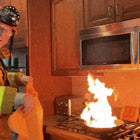 Fire
Fire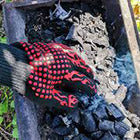 Safety
Safety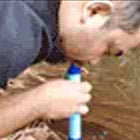 Survival
Survival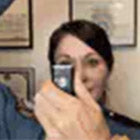 Protection
Protection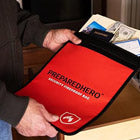 New
New Scouting America
Scouting America
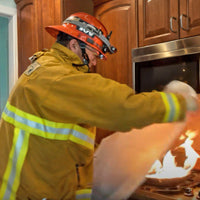 Fire
Fire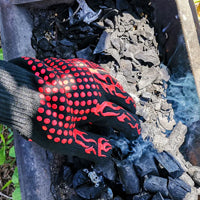 Safety
Safety Survival
Survival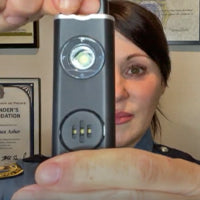 Protection
Protection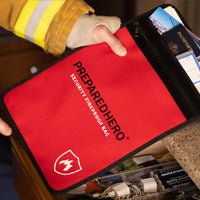 New
New
